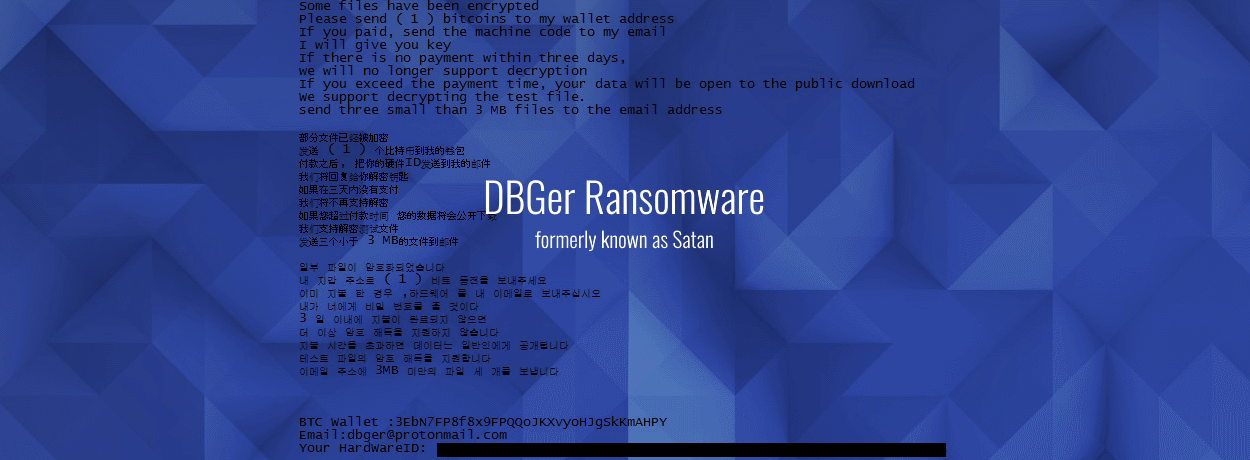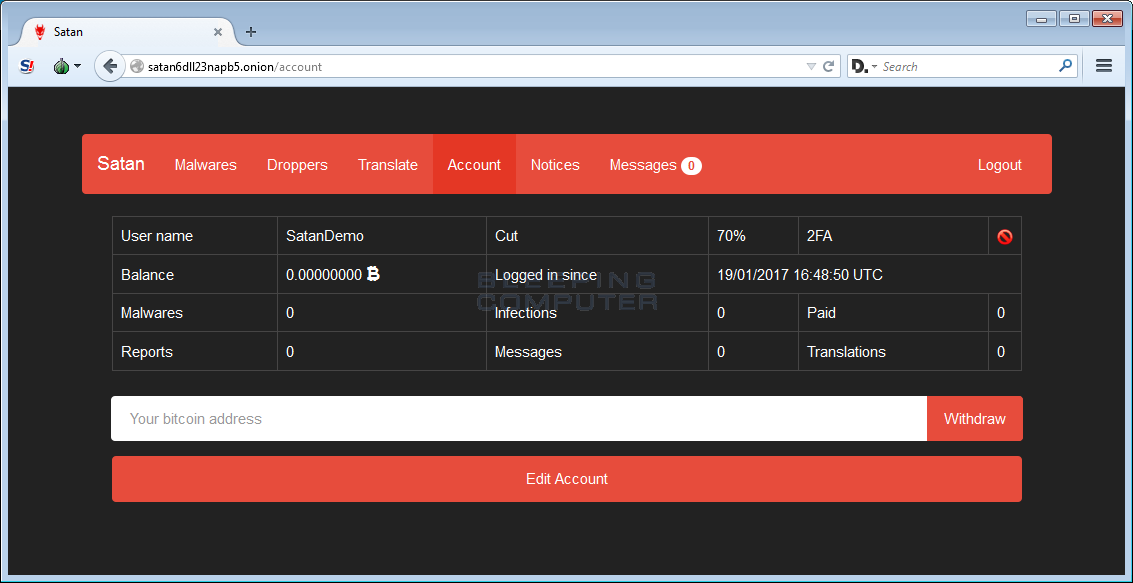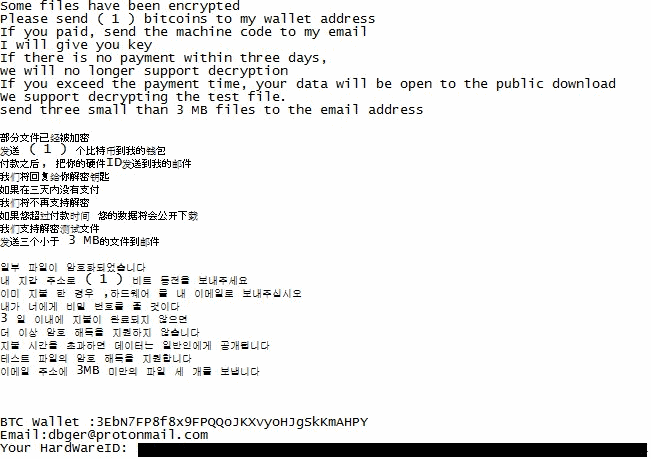
DBGer Ransomware Uses EternalBlue and Mimikats to Spread Across Networks
DBGre ransomware
The authors of the Satan ransomware have rebranded their "product" and they now go by the name of DBGer ransomware, according to security researcher MalwareHunter, who spotted this new version earlier today.
The change was not only in name but also in the ransomware's modus operandi. According to the researcher, whose discovery was later confirmed by an Intezer source code analysis, the new (Satan) DBGer ransomware now also incorporates Mimikatz, an open-source password-dumping utility.
The purpose of DBGer incorporating Mimikatz is for lateral movement inside compromised networks. This fits a recently observed trend in Satan's modus operandi.
History of Satan ransomware
The Satan ransomware launched in January 2017 as a Ransomware-as-a-Service (RaaS) portal, allowing anyone to register and create custom versions of the Satan ransomware.

First versions were unsophisticated, as most new ransomware variants tend to be. For a long time, the Satan crew rented its ransomware to other crooks, who then distributed it to victims, mostly via email spam (malspam) campaigns.
With time, the ransomware gained a lot of reputation and clients on the criminal underground. The group behind the LockCrypt ransomware started as Satan RaaS customers before developing their own strain. Further, other ransomware devs took inspiration from the Satan code, such as the Iron ransomware group.
Satan devs learn from the WannaCry outbreak
But the Satan crew didn't stand idly either. As the ransomware scene evolved in 2017, they evolved as well.
Changes in the ransomware scene of 2017 included self-spreading mechanisms (seen in the three ransomware outbreaks of last year) and a move to infecting larger networks instead of home users (because of larger payouts and payout rate).
Around November 2017, Satan devs started their plans of updating the ransomware to better fit these trends.
The first step they took was to incorporate a version of the EternalBlue SMB exploit. The addition of this exploit meant that after Satan infected a computer, the ransomware would use EternalBlue to scan the local network for computers with outdated SMB services and infect them as well, maximizing an attack's impact.
This mechanism has been previously analyzed by security researcher Bart Parys in a blog post here.
Other ransomware strains that used EternalBlue included WannaCry, NotPetya, and UIWIX, and all used it in a similar way.
Satan ransomware also adds exploits
This focus on bolstering a lateral movement system continued in 2018, as the ransomware received another update to its lateral movement mechanism at the start of May.
AlienVault experts noticed that new versions of Satan would also scan local networks and attempt to infect other computers using one of the below exploits/methods:
JBoss CVE-2017-12149
Weblogic CVE-2017-10271
Tomcat web application brute forcing
DBGer adds Mimikatz
The new (Satan) DBGer ransomware strain continues this focus on lateral movement. The new version spotted today works by dropping Mimikatz, dumping passwords for networked computers, and using these credentials to access and infect those devices as well.
The development path we see taken by the Satan/DBGer crew is what we can expect in the coming months from most ransomware strains.
Cybercrime gangs have understood by now that there is more money to be made from coin-mining campaigns rather than ransomware. The groups who are still active on the ransomware scene will need to improve their code to maximize profits and adding self-spreading and lateral movement mechanisms is the simplest way to do that.
This is because self-spreading and lateral movement features in ransomware allow a crook the opportunity to infect and receive multiple ransom payments just by fooling one absent-minded employee to open a boobytrapped file.
IOCs:
Sha256: 1f3509cc11ffa1f7d839df93615cf1ba0819d75cafd5ef59110d9b01fb90addd
Modification to file extensions:
image.png
[dbger@protonmail.com]image.png.dbger
Ransom note:
Some files have been encrypted
Please send ( 1 ) bitcoins to my wallet address
If you paid, send the machine code to my email
I will give you the key
If there is no payment within three days,
we will no longer support decryption
If you exceed the payment time, your data will be open to the public download
We support decrypting the test file.
Send three small than 3 MB files to the email address
BTC Wallet : [redacted]
Email: dbger@protonmail.com
Your HardwareID:
DBGer ransom note
